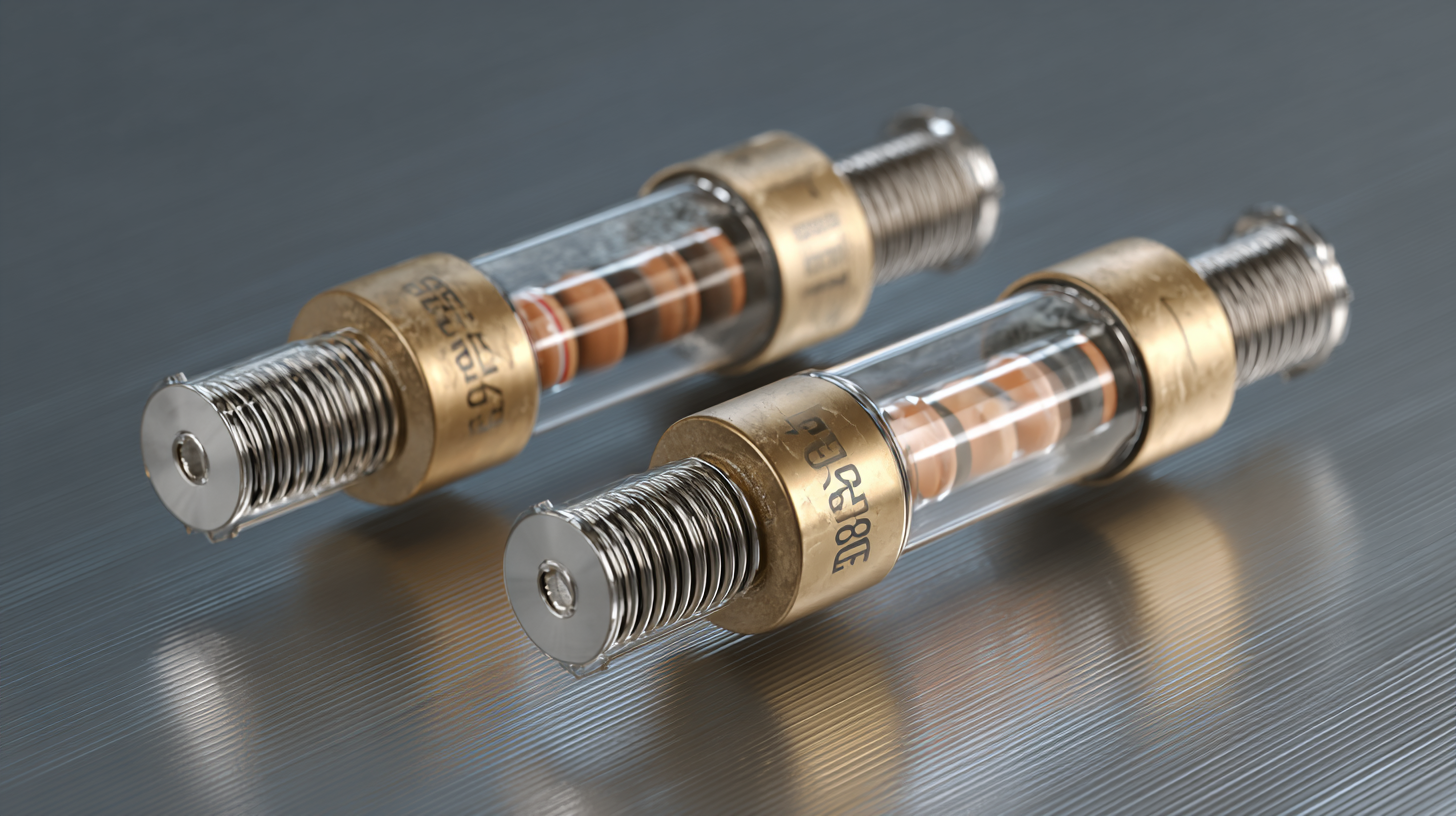
-
Home
-
About Us
-
Products
-
News
-
Blog
-
Contact Us
Leave Your Message

As we look forward to 2025, the realm of Low Voltage Fuse technologies is on the brink of significant transformation, driven by advancements in manufacturing processes and the increasing demand for reliable, efficient electrical systems. According to a recent market research report by MarketsandMarkets, the global low voltage fuse market is projected to reach USD 2.73 billion by 2025, growing at a CAGR of 5.9% from 2020. This surge is largely fueled by the expanding electrical infrastructure and the push for safety in industrial and residential applications worldwide. As China continues to lead in production and technology, its influence on the global market emphasizes the importance of quality and innovation. This blog aims to explore the latest trends in low voltage fuse technologies and their potential alternatives, shedding light on how these advancements will shape the future electrical landscape and enhance market competitiveness on a global scale.

The importance of low voltage fuses in modern electrical systems cannot be overstated, as they play a critical role in protecting electrical circuits from overloads and short circuits. The global electric fuse market was valued at $4.5 billion in 2021 and is projected to reach $9.3 billion by 2031, reflecting a robust compound annual growth rate (CAGR) of 7.7% from 2022 to 2031. This growth is largely driven by the increasing demand for reliable power distribution solutions in various sectors, including residential, commercial, and industrial applications.

As electrical systems evolve to accommodate advanced technologies, the need for effective protection mechanisms becomes paramount. In particular, microgrid protection schemes are emerging as essential components in ensuring the reliability and efficiency of power distribution, both in urban and rural settings. These schemes integrate innovative approaches to fault detection, which contribute to the overall safety and resilience of electrical networks.
As we look toward 2025 and beyond, advancements in low voltage fuse technologies, alongside their competitive alternatives, will be vital in addressing the challenges of modern electrical infrastructures, ensuring uninterrupted power supply while facilitating the transition towards sustainable energy systems.
As the demand for low voltage fuse technologies continues to grow, understanding the essential certifications that govern these products becomes increasingly important. Certifications such as IEC 60269 and UL 248 are pivotal in ensuring that low voltage fuses meet safety and performance standards. These credentials not only validate the reliability of these technologies but also facilitate easier access to global markets. Manufacturers worldwide must comply with these standards to enhance their credibility and assure customers of quality and safety.
The global impact of these certifications extends beyond merely meeting compliance requirements. They play a significant role in fostering innovation within the industry. By adhering to strict standards, manufacturers are driven to improve their products, often leading to the development of advanced low voltage fuse alternatives that can enhance efficiency and minimize risks. Furthermore, these certifications can create a competitive advantage in international markets, allowing companies to expand their reach and influence in the evolving landscape of electrical solutions. As we look toward 2025, the integration of these key certifications will undoubtedly shape the future of low voltage fuse technologies and their various applications worldwide.
This chart illustrates the projected market demand for various low voltage fuse technologies and their alternatives by 2025. The data indicates the relative popularity and anticipated growth of each type in the industry.
The ongoing transition towards renewable energy sources and the urgency to reduce reliance on fossil fuels have sparked innovative developments in low voltage fuse technologies. As traditional fuses may not meet the demands of contemporary energy systems marked by increased efficiency and higher standards of safety, researchers are exploring alternative solutions that could redefine how we manage electrical systems. Advanced materials and smart technologies are emerging, poised to promote reliability while enhancing the safety of electrical devices.
Funding initiatives such as the Fiscal Year 2024 Small Innovative Projects in Solar highlight a national commitment to innovation in energy technology. This program supports groundbreaking research in fields like Concentrating Solar-Thermal Power and Photovoltaics, illustrating a trend where the energy sector is looking not just for efficiency, but also for smarter solutions that can integrate seamlessly with renewable resources. As these technologies evolve, their potential to complement or even replace traditional low voltage fuses could lead to a more secure and sustainable energy framework, ultimately paving the way for a net-zero energy future.
| Technology Type | Current Efficiency (%) | Future Efficiency (2025) (%) | Environmental Impact | Alternative Options |
|---|---|---|---|---|
| Traditional Fuse | 85 | 90 | Moderate | Smart Circuit Breakers |
| Miniature Circuit Breaker (MCB) | 88 | 92 | Low | Electronic Fuses |
| Fuse Link | 82 | 89 | High | Resettable Fuses |
| Current Limiting Fuse | 90 | 95 | Moderate | Hybrid Fuses |
| Polymeric Fuse | 87 | 91 | Low | Conductive Polymers |
When it comes to selecting the best low voltage fuses for your applications, understanding the key practices is essential to ensure safety and efficiency. To help you navigate this process, here is a concise tutorial on implementing best practices for fuse selection. Start by assessing your system's requirements, including voltage ratings, current ratings, and environmental factors that might affect performance. Each fuse type offers distinct characteristics, so considering factors like fuse response time and operational temperature range will guide you toward the optimal choice.

Next, compare alternatives available on the market and their respective benefits. Some fuses are designed with advanced materials to provide faster response to overloads, while others may offer greater durability and a longer lifespan. It's crucial to not only look for compliance with industry standards but also to consider future-proofing your systems. Opting for fuses that incorporate new technologies can enhance reliability and reduce maintenance costs. By following these best practices, you will be better equipped to make informed decisions that ensure the continued success of your projects in the ever-evolving landscape of low voltage applications.
As we venture into 2025, the landscape of low voltage fuse design is evolving rapidly, driven by technological advancements and the increasing demand for enhanced safety and efficiency. One of the crucial trends shaping this future is the incorporation of smart technology into fuse design. Innovative fuses equipped with digital monitoring capabilities allow for real-time performance assessments and predictive maintenance. These advanced designs not only improve reliability but also significantly reduce downtime by alerting users to potential failures before they lead to disruptions.
Another vital aspect set to transform low voltage fuse certification processes is the shift towards more comprehensive regulatory frameworks. As various industries prioritize sustainability and energy efficiency, certification standards are becoming more rigorous. Manufacturers will need to demonstrate compliance with not only safety metrics but also environmental impact assessments. This evolution in certification processes is likely to spur collaboration between technologists and regulatory bodies, ensuring that the next generation of low voltage fuses meets modern demands for performance while adhering to enhanced safety protocols. The fusion of innovation and regulation promises a safer and more sustainable future for electrical systems.